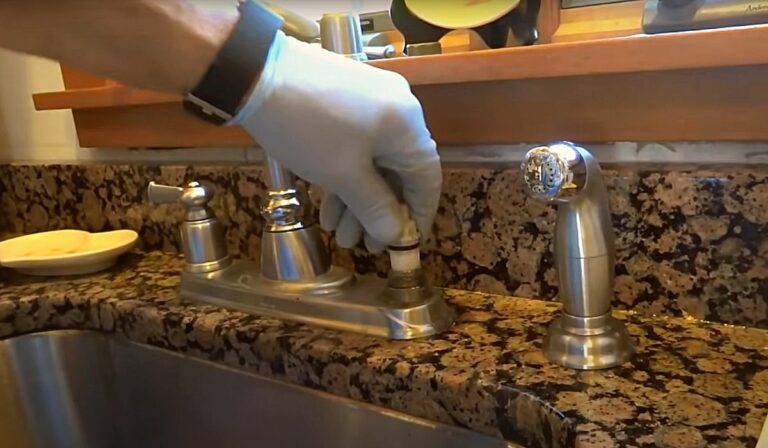How To Plug A Bathtub Drain
Plugging your bathtub drain is one of those small home fixes that can make a big difference in your comfort and convenience. Whether you’re soaking in a relaxing bath or simply need to keep water from draining while shampooing pets or washing items, knowing how to seal your tub drain effectively is essential. This guide will walk you through the types of drains you might encounter, the tools and materials you’ll need, and clear steps to plug your bathtub drain confidently and efficiently. No more guesswork or messy leaks, just straightforward solutions that work.
Understanding Bathtub Drain Types
Before diving into how to plug a bathtub drain, it helps to understand the type of drain you have. Most bathtub drains fall into one of these categories:
- Lift-and-Turn Drains: A stopper you twist to open or close, common in many households.
- Push-and-Pull Drains: Similar to lift-and-turn, but you push down or pull up to control the drain.
- Toe-Touch Drains: Activated by pressing the plug with your toe: they spring between open and closed.
- Flip-It Drains: Have a lever on the stopper that flips to plug or unplug.
- Trip Lever Drains: Usually connected to an overflow plate with a lever you lift to open or close the drain.
The type of drain determines which plugging option fits best and how you’ll proceed for a secure seal. Identifying the drain ensures you pick a plug that fits snugly, preventing water leakage and saving you frustration.
Tools And Materials Needed
To plug your bathtub drain successfully, gather these tools and materials ahead of time:
- Rubber Drain Stopper: Available in various sizes, usually 1.5 to 2 inches in diameter.
- Drain Plug Kit: Includes permanent plugs for replacement or upgrade.
- Temporary Plug Materials: Such as a damp washcloth or a plastic wrap for an emergency seal.
- Screwdriver: To remove or install drain components if necessary.
- Plumber’s Putty or Silicone Sealant: For securing permanent plugs.
- Utility Knife or Scissors: To trim plugs or materials correctly.
Having these at hand creates a seamless workflow, whether you’re opting for a quick fix or a longer-term solution.
Step-By-Step Guide To Plugging A Bathtub Drain
Preparing The Drain Area
Start by cleaning the drain opening thoroughly. Remove any hair, soap scum, or debris using gloves or a drain brush. A clean surface ensures better plug adhesion and prevents mold buildup later.
Using A Rubber Drain Stopper
Choose a rubber stopper that fits snugly into your drain hole. Insert it firmly, then add slight pressure to create a tight seal. Test for leaks by filling the tub with water up to a comfortable level.
Applying A Temporary Plug
If you need a quick, temporary solution, a folded damp washcloth pressed firmly into the drain can work in a pinch. For an even easier option, stretch plastic wrap tightly over the drain and hold it in place with a rubber band or weight. This isn’t ideal for long-term use but can hold water briefly.
Installing A Permanent Drain Plug
For a lasting fix, consider installing a new drain plug designed for your drain type. Remove the old stopper with a screwdriver, clean the area, and apply plumber’s putty or silicone sealant around the new plug’s rim. Secure the plug per manufacturer instructions, then let the sealant cure completely before use. This method minimizes leaks and reduces the need for frequent adjustments.
Common Problems And How To Fix Them
Sometimes, even after plugging the drain, issues arise:
- Leaky Drain Plug: Often caused by an ill-fitting stopper or worn rubber gasket. Replace the gasket or try a different-sized plug.
- Slow Drainage When Unplugged: Hair and soap buildup can block pipes. Use a drain snake or enzyme-based cleaner to clear it.
- Plug Gets Stuck: Lubricate the stopper mechanism with silicone spray and keep it clean.
- Corroded Drain Components: Metal drains can corrode over time. Replace rusty parts promptly to avoid further damage.
Addressing these issues quickly ensures your bathtub remains fully functional and enjoyable.
Maintaining Your Bathtub Drain Plug
Good maintenance extends the life of your drain plug and keeps your bathtub smelling fresh:
- Clean Regularly: Remove and clean the stopper weekly to prevent soap scum and mildew.
- Check Gaskets: Inspect rubber seals for cracks or wear and replace as needed.
- Avoid Harsh Chemicals: Use gentle cleaners to protect the plug and pipes.
- Test the Seal: Periodically fill the tub with water to confirm the plug holds water effectively.
Routine care avoids inconvenient leaks and the need for frequent repairs.
Conclusion
Plugging your bathtub drain doesn’t have to be a guessing game. By understanding your drain type, preparing the right tools, and following clear steps, you can confidently seal your bathtub and enjoy hassle-free baths. Whether you go for a simple rubber stopper or a permanent plug installation, the key lies in fit and maintenance. Stay proactive about cleaning and checking your drain plug to keep those water blockages where they belong, in the tub, not under your floor. Armed with this knowledge, you’re ready to handle your bathtub drain like a pro and prevent unwanted drainage issues.

